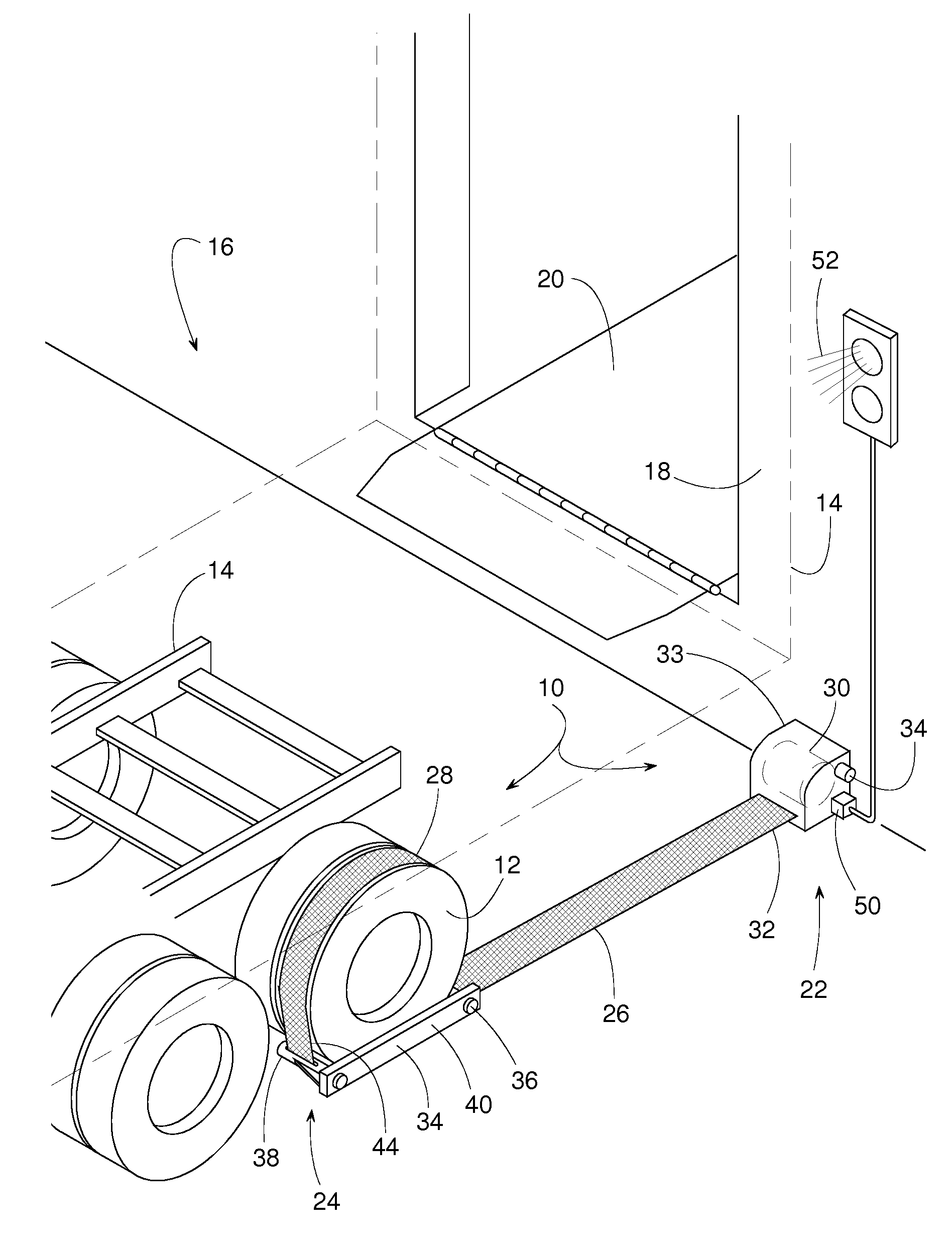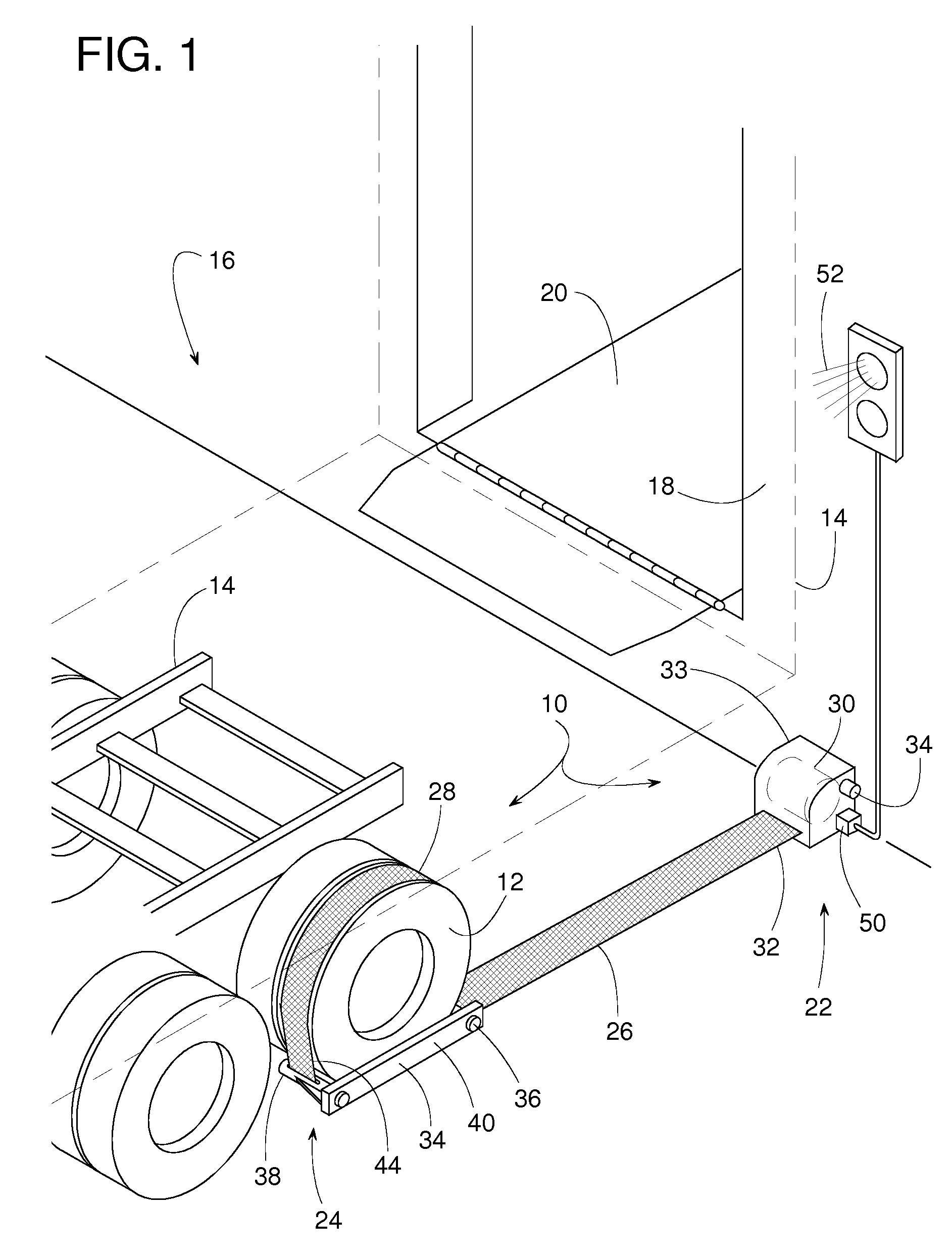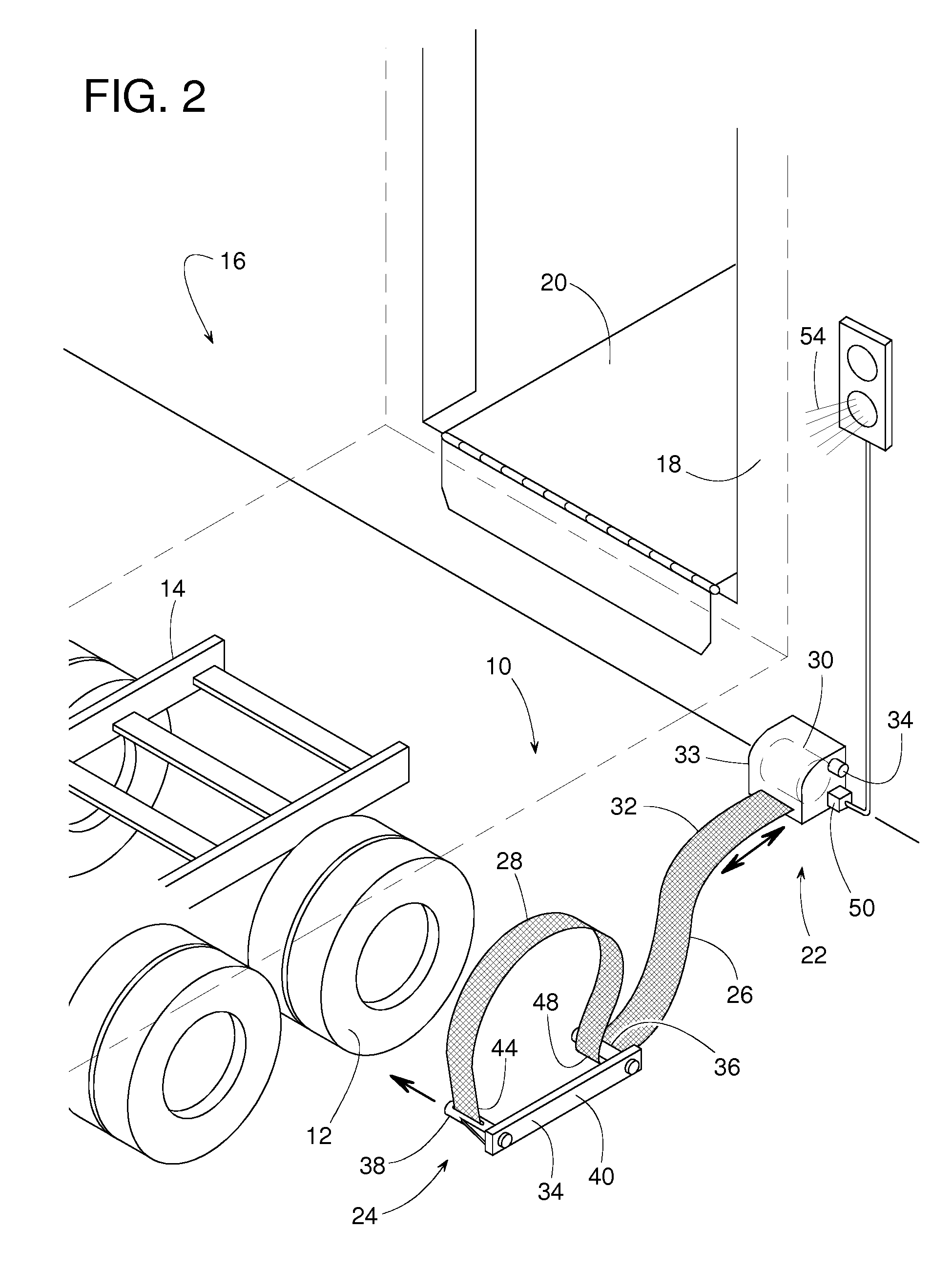Loading dock wheel restraint comprising a flexible elongate member
a wheel restraint and flexible technology, applied in the field of vehicle restraints, can solve the problems of wheel chocks often falling out of the position of driveways that are slippery, becoming very difficult to remove, and prone to falling o
- Summary
- Abstract
- Description
- Claims
- Application Information
AI Technical Summary
Benefits of technology
Problems solved by technology
Method used
Image
Examples
Embodiment Construction
[0021]FIGS. 1 and 2 show a wheel restraint 10 for restraining at least one wheel 12 of a vehicle 14 at a loading dock 16. Restraint 10 is shown in a holding position in FIG. 1 and is shown in a release position in FIG. 2. In the holding position, restraint 10 helps hold vehicle 14 adjacent to a dock face 18 so that cargo can be safely conveyed on and off of vehicle 14. In some cases, a conventional dock leveler 20 can be used to facilitate the loading and unloading operations. An upper section of vehicle 14 is shown in phantom lines to more clearly show restraint 10 in the holding position.
[0022]Restraint 10 basically comprises an anchor 22 that can be installed at a generally fixed location, a barrier 24 that can be manually positioned to selectively engage or release wheel 12, and a flexible elongate member 26 that couples barrier 24 to anchor 22. Although the actual structure of restraint 10 may vary, in some embodiments, elongate member 26 is a nylon strap with a distal section ...
PUM
 Login to View More
Login to View More Abstract
Description
Claims
Application Information
 Login to View More
Login to View More - R&D
- Intellectual Property
- Life Sciences
- Materials
- Tech Scout
- Unparalleled Data Quality
- Higher Quality Content
- 60% Fewer Hallucinations
Browse by: Latest US Patents, China's latest patents, Technical Efficacy Thesaurus, Application Domain, Technology Topic, Popular Technical Reports.
© 2025 PatSnap. All rights reserved.Legal|Privacy policy|Modern Slavery Act Transparency Statement|Sitemap|About US| Contact US: help@patsnap.com



